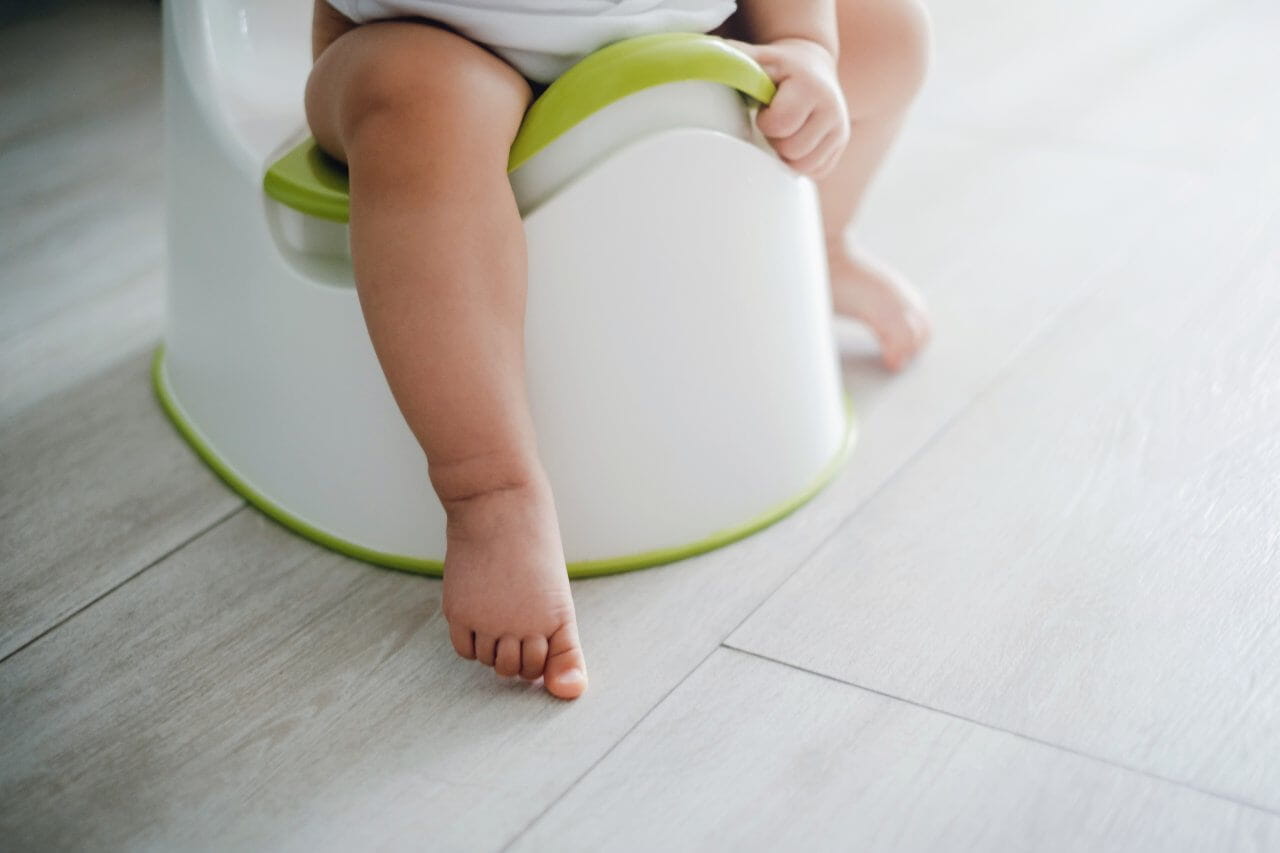14 Potty Training Tips

Achieving potty training success feels great for toddlers and even better for their parents! And while it may seem like the day will never come, every child eventually says goodbye to diapers and hello to greater independence and self-sufficiency.
The key is to make the transition as efficient and stress-free as possible for everyone involved. The tips below can help streamline the process.
How to Simplify Potty Training
Before starting potty training with your toddler, consider the 14 potty training tips below.
- Be sure your child is ready for potty training. Parents often wonder when to start potty training. No matter how eager you are for your toddler to be out of diapers, their training won’t go well until they’re ready to be out of diapers. Look for signs like wanting to be changed promptly after wetting or soiling a diaper, showing interest in the bathroom and how the toilet works, and telling you when they need to go.
- Remember, it’s different to potty train a boy versus a girl. It’s not uncommon for boys to require a little extra time to develop the control needed for potty training. There’s also an added step with boys, who should start by urinating sitting down before graduating to urinating from the standing position. “Target practice” with a floating piece of cereal is a tried-and-true tactic. And none of this is to say it’s easier to potty train a girl, of course!
- Understand that the process will take time. Every child completes potty training at their own pace. That can mean a year or more of successes, failures, and slow progress. And it isn’t simply about your toddler’s interest or focus. There are physiological factors involved, like interpreting the sensation of needing to use the bathroom and calculating how long it will take to get there. Many accidents happen when a child with good intentions simply doesn’t do the math properly!
- Act out the potty process. It can help a child visualize the process of using a potty chair by having a favorite stuffed animal do it several times in the weeks leading up to the start of potty training.
- Use positive language. Words like “stinky” and “icky” can create a negative perception of using a potty chair. It’s better to talk about the process as normal and natural without commenting negatively on the output.
- Establish and stick to a routine. If you find that your child has success when they sit on their potty chair roughly 30 minutes after a meal and have a book to read, try to maintain those same conditions wherever you are. That includes home, grandma’s house, and even daycare if your provider can accommodate that request. It’s also a good idea to use the potty chair just before bed and immediately after getting up in the morning.
- Find the right location. Some children want to go potty where the rest of the family does. Others are more comfortable using a potty chair in their bedroom. And some kids don’t want to miss out on anything and prefer to have their potty chair in the family room. Figure out what’s best for your toddler. Then, if they choose an alternate location, gradually start moving their potty chair toward the bathroom.
- Be as patient as possible with each trip. During a busy day, it can seem like a child is intentionally “dragging their feet” as you wait and wait for results while they sit happily on their potty chair. Remember that young kids are still developing the control required to hold back when needed or move the process forward.
- Provide praise. It’s clear that positive reinforcement works when you see a child’s face light up after you praise their successful trip. They want to make you happy. Be sure to show that you are!
- Consider using treats. Many parents find that the possibility of a reward (a small, tasty treat, for example) helps a toddler focus and complete their task consistently.
- Consider letting your toddler go naked. A child who seems to have no problem continuing to use a diaper may be encouraged to try the potty chair when the alternative is making a visible “deposit” on the floor.
- Buy big-kid underwear as an incentive. Most toddlers are excited about the prospect of graduating to big-kid underwear. Taking them shopping for some and talking about how they’ll get to wear them soon is a powerful motivator.
- Lead by example. Let your toddler join you when you go to the bathroom. Seeing that “everybody goes” can take some of the mystery or concern out of using the potty chair or toilet.
- Make it fun! You don’t have to be all business when your child is “doing their business.” If they want to concentrate at crucial points during a potty trip, respect that. But otherwise, there’s nothing wrong with chatting, singing, laughing, and generally having a good time!
Have Potty Training Questions? Baptist Health Has Answers!
Every potty training journey is different. If you have questions or need advice on overcoming specific challenges, our pediatric care experts are here for you!
Next Steps and Useful Resources
Is My Toddler Getting Enough of the Right Nutrition?
Traveling with a toddler
6 Tips for Tackling the Time Change With a Toddler



